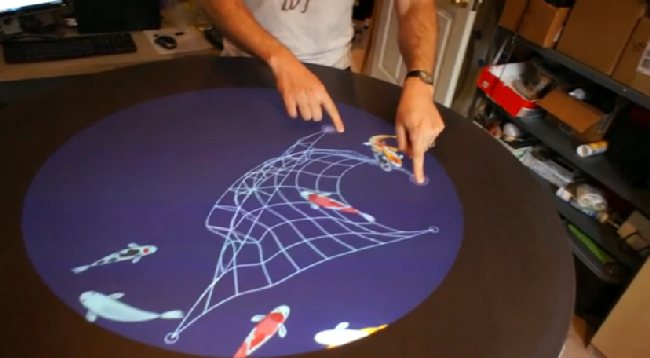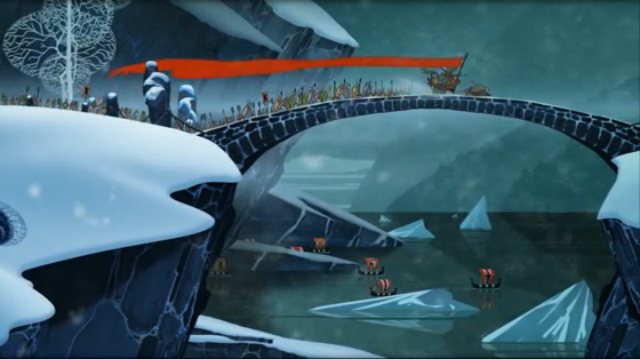The Grasshopper Method: Building Honest Buzz for Your Game

They were saying how it reminded them of the glory days of the arcade. They talked about how it was something they didn’t realize they needed so badly. They spoke about the new kinds of games it could enable. They said they thought it was the coolest thing happening in the New York game industry at the moment.
Five minutes ago, all they knew was its name: Grasshopper.
At November’s demo night for the New York Gaming Meetup, a monthly event hosted at Microsoft’s imposing offices in Midtown Manhattan, Ien Cheng introduced his touch-based gaming table to the crowd. More than just a gaming table, Cheng talked about how Grasshopper is designed to be played in pub-like social settings, as a way to bring back the face-to-face interaction and atmosphere of shared play that was once so common in arcades. Only this time, soda and pizza would be swapped out for cocktails and appetizers for a new kind of adult social gaming lounge.
After a brief talk on the project’s background and a teaser video, the crowd was convinced. Yet while Grasshopper’s potential is formidable and the founders’ backgrounds are impressive, so much could go wrong before the project sees the light of day: Trading so heavily on nostalgia could lend it a novelty feel or a fickle audience; they could be snapped up by a tech giant and left to flounder without support; they could lose their funding; the founders could quit; the games could be boring. But at that moment, watching the video, the people didn’t care. They were simply excited.
Grasshopper founder Ien Cheng discusses the project.
It got me thinking about the proper role of hype in the game industry release lifecycle. In the best case, hyping means communicating a game’s value directly or indirectly to audiences with the highest probability of buying the thing. In the worst cases, hyping means manipulating existing or creating new materials designed to convince audiences with the highest probability of buying the thing that the thing is worth buying when it is not. In these instances, you’ll still move units, but the negative brand fallout could be devastating to your company, the IP, and any other people or properties associated with it.
The mainstream game industry seems to be comfortable hanging out somewhere in the middle – EA will doctor screenshots; big developers will release pre-rendered trailers instead of showing gameplay, or present pre-scripted scenes as playable demos. And for some purposes, they’re right to trade on spectacle over substance – EA’s titles generally perform well critically and commercially, Guerilla went on to raise their game and deliver on Killzone 2’s infamous trailer and Half-Life 2 took the extra development time to do the same. Manipulating consumer expectations is a game PR managers play, and play well.
Yet for smaller teams without the infrastructure to embark on million-dollar psychological stress tests, a better way to get the word out has quickly solidified. Being honest with coverage, being transparent to the press and the curious, making playable demos available as soon as possible – these practices have earned firm loyalty to tiny indie studios as well as tidy paydays.

Learning how to play this game is fast becoming as important as learning how to actually code your own. In the age of Kickstarter, not being savvy with publicity methods only creates powerful obstacles between you and success.
As an example, Grasshopper is great and also not. It’s in relative stealth mode, so there’s no media blitz or even much information available online. But as an example of early stage buzz building, there are valuable lessons here. Their efforts are noticeably scaled in line with their goals: they aim to launch in a specific market (New York City), so their outreach is focused locally. They don’t have much to show yet, so they keep the pitch short to keep you intrigued.
Jason Rohrer’s success followed similar logic. After releasing his first few games to zero fanfare, he submitted his third to game festivals. He got accepted, the right people with industry clout played his game, and Passage became an indie darling. Now, instead of firing press releases at every game news site that moves and competing with behemoths like Activision, he announces new titles with a single tweet. Even with a large following (for an indie), Rohrer knows the value of scaling outreach.
So how do indie developers talk to the press? Hookshot’s excellent feature provides a great list of methods and ideas.
I’ve read plenty of articles about Far Cry 3, CODBLOPS 2, Dishonored and Hitman: Absolution. I have a good understanding of what each game offers, how each has been reviewed, and if I plan on buying them. They’ll continue jostling each other for attention on Kotaku and Gamespot until they eventually make room for Far Cry 4, CODBLOPS 3, Dishonored 2, Hitman 6.
But right now, I’m more interested in what Grasshopper does next.
